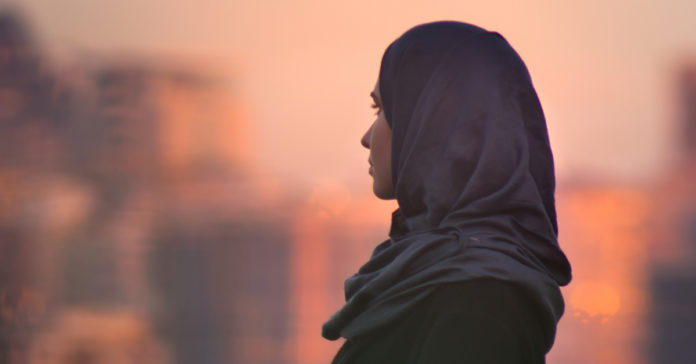With feminism’s continued failure to articulate a coherent concept of womanhood, the hijab provides a refreshing alternative in how women in the West can understand female empowerment, writes Najm Al-Din.
With the summer in full swing, the seasonal craze of catcalling is set to rear its ugly head. We rarely stop to think of the victims of such unabashed ogling but it should concern us, as a recent study has shown a link between sexual objectification and aggression towards women.
Furthermore, a UN Special Rapporteur, Rashida Manjoo, drew this disturbing trend into sharp focus when claiming that sexual harassment in the UK was more ‘in-your-face’ than any other country in the world, taking the media to task for its over sexualised portrayals of women.
Yet, for many women, sexual power is also a form of agency. This conflation of sex and power is the root of much confusion in feminist circles and gender studies, with tendencies to view wolf-whistles as appreciative gestures continuing to thrive. Just ask Vice Columnist Paris Lees, who urged women to embrace the experience of being ‘eye-f*cked on the escalator’ as empowering.
Flaunting one’s bountiful cleavage is a way of asserting control over one’s sexuality and is far from being a passive object of the male gaze, we are told. Such is the logic which typifies third wave feminist attitudes on sexuality, prompting a radical rethinking of the seminal works in feminist theory.
Sex and female “empowerment”
However, no amount of post-feminist spiel can legitimise the cultural perversion of equating female objectification with a faux-empowerment, and this is precisely the psychology underpinning our dysfunctional attitude towards sex and gender.
Subscribe to our newsletter and stay updated on the latest news and updates from around the Muslim world!
From the flesh-fest of the music industry to the commercialisation of women’s images in cosmetics and fashion, our popular culture is soft porn personified, granting men a licence to lust and rearing a generation of young women who believe the only way to prove their mettle is by utilising their bodies for public consumption. This doesn’t necessarily have to include performing on somewhere like dosexvideo, but often involves putting a monetary value on the appearance of your body.
To claim that overly sexualised representations of women are independent lifestyle choices, which are divorced from socio-cultural conditioning is simply disingenuous.
The hijab
With that reflection, I’d like to suggest a potential squaring of the circle: The hijab. Having grown up in a family where women have freely observed the headscarf from early adolescence, I believe the hijab can offer British women a meaningful respite from casual sexism and help them reclaim the much-contested “F Word”.
As a Muslim male, grubby tabloids and their equally repugnant mouthpieces like Katie Hopkins would argue that I am in no position to make this argument without making myself an accessory to sexism. According to Islamophobes, the grooming scandals and female genital mutilation cases in the British Muslim community precludes any Muslim from moralising on the thorny subject of women’s rights.
Despite this hostile climate and the seemingly impossible task of postulating Islam as a catalyst for social change, I think it’s important for Muslim men to enter the debate on women’s rights, seeing as we’re often accused of promoting gender inequality in our own communities.
By taking a principled stand for Muslim women to dress according to their religious tradition without compulsion, Muslim men can help to dispel misconceptions surrounding their internalised habits and cultural practices which are erroneously implicated with gender bias.
Men, power and feminism
While questions relating to power and privilege will persist, the question is not whether men can be feminists. Rather, it is about the religious duty for Muslim men to join their sisters-in-faith in an active struggle to articulate a concept of female agency, which departs from the prevailing notions of womanhood.
It goes without saying that Muslim women ought to be the dominant voice here, not least to avoid the perverse irony of men taking credit for articulating a concept of which they share no lived experience.
Understandably, feminists will be rolling their eyes as they have historically viewed religion as a means of enforcing the patriarchal consensus. The hijab in particular has been used as a scapegoat in today’s culture wars, existing only as a tool of oppression in the minds of average Britons, conjuring manufactured fears of #creepingsharia and stealth jihad. Any attempt by Muslim men to advocate on its behalf would be interpreted as a subtle form of culture domination and a Trojan horse for a more sinister agenda.
But acknowledging the hijab as an authentic challenge to the cultural forces of female objectification and male entitlement is a healthy starting point from which feminists can discuss pathways to re-discovering their agency, which is so often at the mercy of corporate interests. It’s an empowering alternative to the airbrushed sexuality sold to young girls which the advertising industry knows all too well.
For women perturbed by the sexuality championed by third-wave feminists which lends itself easily to normalising bigotry, they will be encouraged to learn that a hijab-inspired femininity is not saddled with the weight of expectation and stands resilient in the face of a society glutted with sexual stereotypes.
Rather, the sensuality experienced by those adorning the headscarf manifests itself in a private sexuality, appropriately channelled towards marital intimacy and not as a bartering chip. That’s not to say hijab-clad girls don’t court unwanted attention and are impervious to any objectifying social trend. In fact, the risqué manifestations of the veil is much to the chagrin of conservative Muslims for the same reasons our cultural gatekeepers chide the harmful consequences of Britain’s pervasive sexism.
Nonetheless, the growing trend of English female converts to Islam offers refreshing insights into the liberation afforded by the much stigmatised headscarf. Not only do these women feel they are less susceptible to the harassment borne of tongue-in-cheek naughtiness, which is now classified a hate crime in one British county, but their style of clothing can help free women from the male-imposed exploitation which often informs their sartorial choices.
Failure of feminism
Feminism has reached an impasse, failing on its promise to articulate a concept of womanhood that is not relative to the cultural expectations of men.
By contrast, the hijab breaks new ground in the stride for gender equality, inspiring a confident realisation that sex does not have to sell for women to compete on the same terms.
Perhaps the secret to restoring public decorum between the genders does lie in a tiny scrap of fabric after all.
The Islamic concept of gender can usher a positive change in gender relations and Muslim women are perfectly placed to mount a resistance to third wave feminism by promoting their own ideal of self-actualisation.
While the hijab is iconic of the discomfort westerners have with Islamic social mores, it has also entered the post-feminist space with a lot of noise, helping many women to reclaim an authentic sense of self.






















